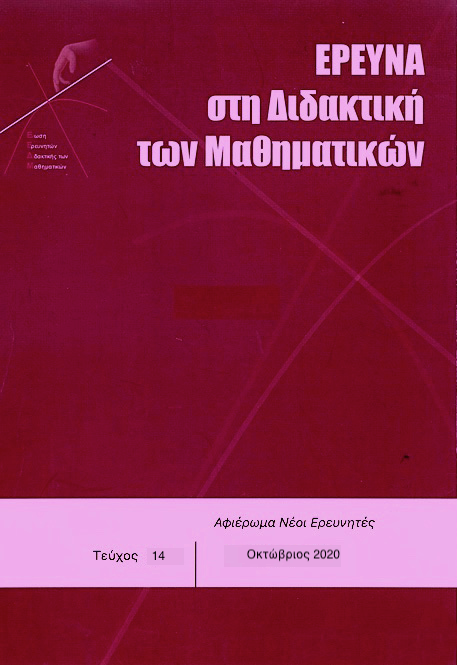ΔΙΔΑΣΚΟΝΤΑΣ ΤΑ ΚΛΑΣΜΑΤΑ ΣΕ ΜΑΘΗΤΕΣ Γ΄ ΔΗΜΟΤΙΚΟΥ ΜΕΣΑ ΑΠΟ ΤΗΝ ΑΦΗΓΗΣΗ

Περίληψη
Βασικός σκοπός της παρούσας έρευνας είναι η διερεύνηση του ρόλου που μπορεί να διαδραματίσει η χρήση της αφήγησης στη διδασκαλία και τη μάθηση των κλασμάτων σε μαθητές της Τρίτης Δημοτικού. Πιο συγκεκριμένα, μέσα από την πειραματική διαδικασία που ακολουθήθηκε, επιχειρήθηκε η διερεύνηση της επίδρασης που μπορεί να ασκήσει η αφήγηση στην επίδοση των μαθητών της Γ΄ Δημοτικού στα κλάσματα και να εξεταστεί ποιοι είναι οι μαθητές που ωφελούνται περισσότερο από τη χρήση της αφήγησης στη διδασκαλία των Μαθηματικών (μαθητές με υψηλή, μέση ή χαμηλή επίδοση στα Μαθηματικά). Επιπλέον, καταβλήθηκε προσπάθεια να προσδιοριστούν οι μαθηματικές ικανότητες στις οποίες ενδεχομένως επιδρά θετικά η χρήση της αφήγησης. Από τα ευρήματα της έρευνας προέκυψε ότι οι μαθητές της πειραματικής ομάδας, που διδάχτηκαν τα κλάσματα με τη χρήση της αφήγησης, σημείωσαν καλύτερες επιδόσεις από τους μαθητές της ομάδας ελέγχου στο τελικό τεστ, ενώ οι μαθητές που ωφελήθηκαν περισσότερο ήταν εκείνοι με μέση και, κυρίως, με χαμηλή επίδοση. Οι μαθηματικές ικανότητες στις οποίες επέδρασε θετικά η χρήση της αφήγησης ήταν η σύγκριση κλασμάτων, η εύρεση ισοδύναμων κλασμάτων, η δημιουργία και ο χειρισμός των αναπαραστάσεων, καθώς και η επίλυση προβλήματος.
Λεπτομέρειες άρθρου
- Πώς να δημιουργήσετε Αναφορές
-
Καϊάφα (Ioanna Kaiafa) Ι. (2020). ΔΙΔΑΣΚΟΝΤΑΣ ΤΑ ΚΛΑΣΜΑΤΑ ΣΕ ΜΑΘΗΤΕΣ Γ΄ ΔΗΜΟΤΙΚΟΥ ΜΕΣΑ ΑΠΟ ΤΗΝ ΑΦΗΓΗΣΗ. Έρευνα στη Διδακτική των Μαθηματικών, (14), 35–59. https://doi.org/10.12681/enedim.20918
- Ενότητα
- Νέοι Ερευνητές

Αυτή η εργασία είναι αδειοδοτημένη υπό το CC Αναφορά Δημιουργού 4.0.
Οι συγγραφείς των άρθρων που δημοσιεύονται στο περιοδικό διατηρούν τα δικαιώματα πνευματικής ιδιοκτησίας επί των άρθρων τους, δίνοντας στο περιοδικό το δικαίωμα της πρώτης δημοσίευσης. Άρθρα που δημοσιεύονται στο περιοδικό διατίθενται με άδεια Creative Commons BY και σύμφωνα με την άδεια μπορούν να χρησιμοποιούνται ελεύθερα, με αναφορά στο/στη συγγραφέα και στην πρώτη δημοσίευση.

